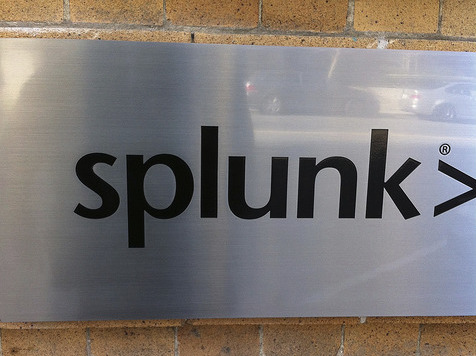Splunk Becomes a Strategic Acquisition Target for Several Major Players

Recently, Big Data player Splunk (NASDAQ: SPLK) announced its first quarter results that surpassed market expectations. Splunk is focusing on transitioning its business model to a subscription-based model, a move that is impacting quarterly cash flows. The drop in the cash flow outlook resulted in a decline in the stock’s price post result announcement.
Splunk’s Financials
Revenues for the first quarter grew 36% over the year to $424.9 million, significantly ahead of the market’s expectations of $395.7 million. Net loss was $155.4 million and adjusted EPS was $0.02 per share, again better than the market’s forecast loss of $0.15 per share.
By segment, its License revenue increased 46% to $202.9 million, while Maintenance and Services revenue climbed 29% to $222 million. Within the segment, Software revenues grew 54% to $265 million.
During the quarter, Splunk added more than 400 new enterprise customers including big names like Brink’s, Cerner, Chipotle Mexican Grill, and Slack.
For the current quarter, Splunk expects revenues of $485 million, compared with the market’s estimate of $477 million. It expects to end the current year with revenues of $2.25 billion, compared with the Street’s estimated $2.2 billion.
Splunk’s Growth Focus
Splunk has recently released product upgrades like Data Stream Processor and Data Fabric Search. The Data Stream Processor accesses, analyzes, and transforms vast amounts of data in motion, in real time, and routes it to multiple destinations. It can be used to analyze transactional events such as call detail records in real-time, monitor anomalies on the stream, and route service quality issues.
The Data Fabric Search enables customers to perform complex analytics against enormous data sets stored in Splunk Enterprise and elsewhere. It will allow customers to identify the patterns of service quality incidents in those call detail records, search through billions of events across a wide-ranging timeline, and analyze them at the level of individual user accounts or device IDs.
Some of the other services released recently include the Connected Experiences and Splunk Business Flow. Connected Experiences delivers insights on the go through augmented reality on mobile devices through mobile applications to provide users with the ability to investigate, monitor, analyze, and act on their data anywhere, anytime. Business Flow automatically analyzes the machine data gathered by Splunk and connects steps and events from various systems to create an immediate view of operational processes to identify opportunities for improving business operations.
Splunk’s Cash Flow Challenges
Splunk is transitioning its business to a subscription-based software model. While the subscription-based model translates to a more stable revenue base, it also causes a significant change in the deferred revenue accounting. In case of perpetual licenses, customers are billed upfront, whereas in subscription-based revenues, they are invoiced annually under renewable contracts. The shift in the billing model results in a “greater trough in operating cash flow” and an impact to deferred sales. The impact of the transition on free cash flow was confirmed by Splunk’s revised operating forecast. Splunk dropped its operating cash flow forecast from $350 million to $250 million. I think it is a short-term challenge for the company, but in the longer term, the transition will stand Splunk in good stead.
The recent Tableau acquisition by Salesforce should also benefit Splunk. Splunk had entered into a partnership with Tableau in 2014 that allowed users to leverage Tableau to visualize machine data from Splunk Enterprise. Tableau’s acquisition by Salesforce would help Splunk enhance its market reach as well.
I think Splunk is a very lucrative acquisition target for several major players including Salesforce, SAP, Microsoft, Oracle, Workday, ServiceNow, and Cisco. Salesforce for instance would benefit from Splunk’s deep partnership with Tableau.
Then there is SAP. I have said this earlier that I think SAP would benefit by acquiring Splunk to offer analytics for its IoT offerings. Similarly, both Microsoft and Oracle can benefit by adding the data analytics solution from Splunk to their Power BI and OBIEE capabilities. Similarly, Workday is driving focus on Prism analytics and AI solutions to improve analytics, and an acquisition of a company like Splunk would help significantly advance those capabilities. Meanwhile, companies like ServiceNow are always on the lookout for technology and talent acquisitions that can improve their customer experience. Adding Splunk’s analytic capabilities will surely benefit its customers.
Its stock is trading at $119.32 with a market capitalization of $17.9 billion. It had climbed to a high of $143.70 earlier this year. The stock has recovered from the 52-week low of $83.69 that it had fallen to in October last year.
Photo Credit: Ted Striker/Flickr.com
Featured Videos
Can 1M/1M Help Me Raise Money?
How Does 1M/1M Democratize Entrepreneurship Education?
How Does 1M/1M Democratize Management Consulting?
When Is The Right Time To Join 1M/1M?
Can 1M/1M Help Me With Business Development?
Can 1M/1M Help Me With Market Sizing?
Can 1M/1M Help Me Validate My Product?
Will I Have Private 1-on-1 Sessions In 1M/1M?
How Does 1M/1M Help Entrepreneurs Connect With Silicon Valley?
Mentoring or Consulting?
Why Does 1M/1M Charge $1000 a Year?
Why Does 1M/1M Partner With Local Organizations?
Why Don\’t Mentoring Networks Work?
Why Is It Important To Study With 1M/1M Now?
Dan Stewart Story
Vikrant Mathur Story
